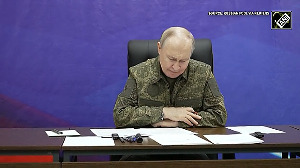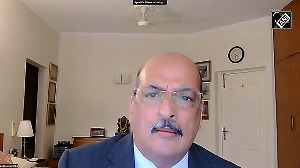 In today's business environment, where most of the communication happens through e-mail, it is essential to have good command over written communication and be able to put one's ideas into words which can reflect them in exactly the same manner and tone in which the writer intends to communicate.
In today's business environment, where most of the communication happens through e-mail, it is essential to have good command over written communication and be able to put one's ideas into words which can reflect them in exactly the same manner and tone in which the writer intends to communicate.
So, in the fifth article of our continuing series on employability skills, today we discuss some important aspects that one should keep in mind while writing e-mail.
Grammar
The importance of the correct use of grammar can't be overemphasised. Reading an e-mail with incorrect usage of verbs is the biggest put-off. So be cautious about the rules of language while writing a formal e-mail.
Tone
When you speak to someone face to face, you can use eye movements, facial expressions, hand gestures and body language to set the tone of the conversation. Written communication, however, is bereft of these advantages. So the entire onus is on the choice of the words that you use in your communication, which will set the tone of the e-mail in the mind of the reader. So when you are writing a formal e-mail, use words like 'kindly', 'please', 'let us', 'thank you' etc.
Structure
A well-structured e-mail means that there is coherence among the ideas and the sentences follow each other in a logical manner. Further, all the information related to a particular context should be presented at the same place. Consider the following example for a detailed explanation:

In Sample-1, the number of units sold in the current month has been told in the third sentence, whereas the comparison of sales with the target has been done in the first sentence. A better way of presenting this information is given in Sample-2 where the number of units is also mentioned in the first sentence, so that the reader of the mail gets all the information regarding current month sales in the first sentence only.
Subject of the mail
It often happens that an e-mail is sent to various employees in the organisation and their response to that mail is solicited. In such a scenario, one should be careful of the 'Subject' and the 'To' fields while sending a reply. Keep the subject the same as that of the original e-mail. You might need to change the subject in some cases where the sender has asked you to respond with a specific subject line.
Secondly, do not unnecessarily hit the 'Reply All' button if your response is required only by a single person. Similarly, if there is a group discussion happening through chain mails, make sure that you send your replies to all the people involved in the discussion, so that there is no information mismatch within the group.
Spelling mistakes, SMS language
Put a self-imposed ban on the use of SMS language in official e-mails. Also, make sure that there are no red underlines in the text while you are typing the e-mail. Those spelling mistakes should be corrected before you hit the 'Send' button.
Formatting
Just like a gift is wrapped in colorful paper, a mail should be wrapped in a nice format. The use of formatting tools like numbering, bullets, highlighting, underlining, larger font size for headings, etc make the e-mail more readable and easy to understand. However, avoid using too many colors, or too many font types or sizes, as this may rob the mail of its seriousness and formal tone.
Acknowledgement
Anyone who writes an e-mail expects a response to it. While in most cases, e-mails ask for specific information to be delivered or discussed, there are a few cases where such a requirement is not explicitly stated. See the following examples:

In both the samples above, there is no immediate action expected from the receiver of the mails. However, just like we nod our head or say okay during verbal communication, it would be a good practice to acknowledge such mails by sending replies to them. One can send a single line reply, thanking the sender for the information, or telling him when the next communication from your end can be expected.
Read the mail yourself
After you have written the e-mail, read it once for yourself. This way you will know if the e-mail sounds logical enough, has any grammatical or spelling errors, and presents the entire picture in the same way as you had intended it to be.
Mayank Gupta is an IIM Kozhikode alumnus and handles the Business Development at BodhiSutra. BodhiSutra (www.BodhiSutra.com) is an IIT-IIM alumni venture which specialises in Employability Skills training programs for graduate and postgraduate students. BodhiSutra offers both domain specific programmes and general employability skills training programmes for students and working professionals.





